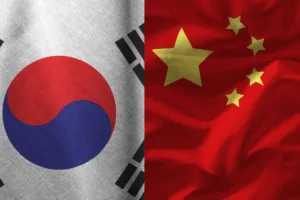In a strategic maneuver emblematic of the shifting sands in the global display market, Chinese panel manufacturers like BOE and CSOT are accelerating their transition from LCD to OLED technologies across a broad spectrum of devices including smartphones, tablets, laptops, monitors, and TVs. This pivot, aiming to capture a larger share of the burgeoning OLED market, signifies a significant shift in production strategies as these companies increase their OLED shipments for smartphones and tablets, thereby reducing the utilization of their existing LCD production lines.
Simultaneously, the landscape for OLED production is witnessing a notable transformation in South Korea as well. Samsung Display, a stalwart in the global display industry, is undergoing a significant restructuring. The company is transferring a substantial number of employees from its QD-OLED panel production units to smaller and medium-sized units. This move is part of a broader strategy to slash labor costs and boost profitability in its large-panel production sectors, particularly in QD-OLED.
| Year | Global Smartphone OLED Capacity (million units) | Smartphone OLED Demand (million units) | Oversupply Index (%) | Korean Companies OLED Shipments (million units) | Chinese Companies OLED Shipments (million units) | Korean Companies Sales Share (%) | Chinese Companies Sales Share (%) |
| 2024 | 1,079.60 | 805.70 | 25.40 | 442.10 | 363.60 | 55% | 45% |
| 2025 | 1,096.20 | 898.30 | 18.00 | 454.70 | 443.70 | 51% | 49% |
| 2026 | 1,153.00 | 998.40 | 9.70 | 465.30 | 533.10 | 47% | 53% |
| 2027 | 1,087.80 | 1,019.40 | 6.30 | 462.10 | 557.30 | 45% | 55% |
| 2028 | 1,087.80 | 1,056.30 | 2.90 | 480.90 | 575.40 | 46% | 54% |
However, Samsung Display’s commitment to the OLED sector remains unwavering, as evidenced by its heavy investment in the mass production capabilities at its 8.6-generation IT OLED production line (A6). This investment is indicative of the company’s anticipation of surging demand for OLED panels, with mass production slated to commence in 2026. Nevertheless, the current status of QD-OLED technology appears to be diminishing within the company’s portfolio, as indicated by the sale of equipment from its Asan Park L8 facility, earmarked for the second phase of QD-OLED investment, signaling a potential pivot away from additional investments in QD-OLED technology in the near term.
This strategic divergence between Chinese and Korean panel makers underscores the intensifying competition in the global OLED market. With Chinese companies rapidly transitioning to OLED production, they are poised to surpass Korean panel makers in terms of OLED shipments from 2026 onwards. However, Korean firms are expected to maintain their dominance in OLED sales revenue, focusing on the higher end of the market with more expensive OLED panels, while Chinese competitors target volume and market share growth with more affordable options.

